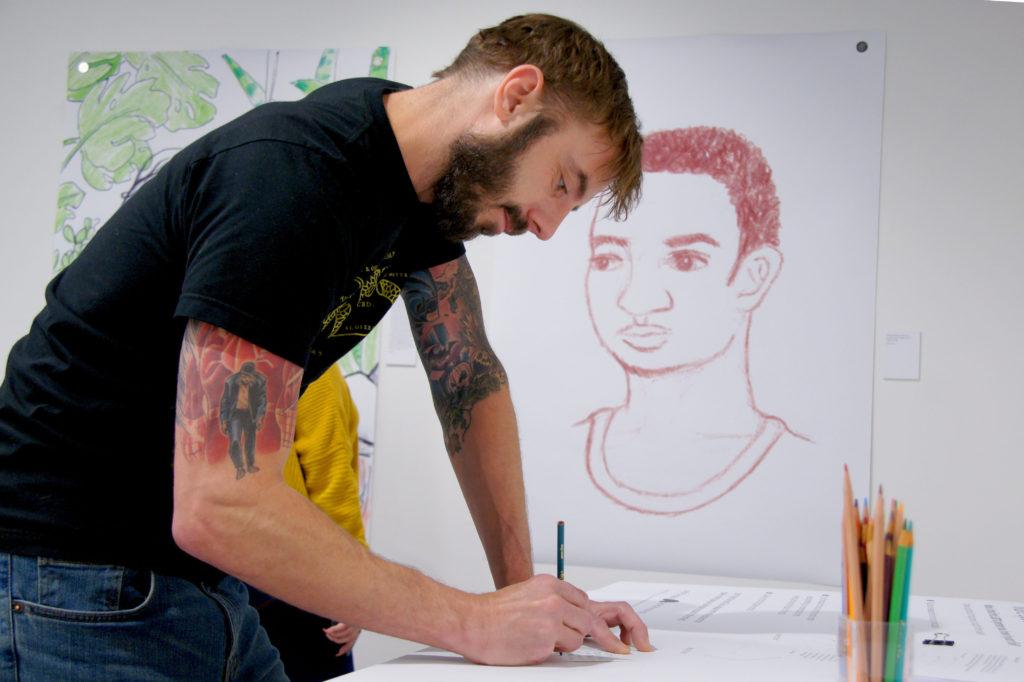SF State’s design space is exhibiting an interactive installation where members of the LGBTQ community are featured through hand-drawn portraits in an effort to emphasize the dynamic history of the queer community through mid-March.
The project, A People’s Museum of LGBTQ History, was inspired by creators Kate Jarboe and M. Wright. The two became inspired by exploring queer archives from earlier protest movements from the ‘60s, ‘70s and ‘80s. The project showcased social issues from earlier decades and highlighted how relevant past queer movements still continue to be today.
Those projects inspired Jarboe and Wright to create an interactive LGBTQ archive.
“When we arrived at this project we were really interested in engaging with everyday people to talk about how queer experiences and queer lives are part of their life,” said Wright. “Whether they identify as part of the LGBTQ community or not.”

Through A People’s Museum, Jarboe and Wright’s goal is to highlight the population of people who identify as LGBTQ in each metropolitan city and who otherwise would not be commemorated.
“What we think the project represents is this public acknowledgment of the roles that LGBTQ peoples have played in each of our lives,” said Wright.
San Francisco has a reputation of being a very culturally diverse and socially accepting city. According to Gallup’s poll, 6.2 percent of San Francisco residents identify as gay, lesbian, bisexual or transgender, making the LQBTQ population in San Francisco the largest in the nation.
Each artist who contributes to the exhibition has the opportunity to tell a story and draw a portrait of the first LGBTQ person they ever remember meeting. Drawings range from pictures of family members, childhood friends or teachers.
SF State student, Joseph Kleid helped put the exhibition together and was pleasantly surprised with the results.
“I’ve been walking around and it’s really moving seeing all the stories that have affected lives, the idea is very interesting,” said Kleid. “The [more] I look at the pictures, I like them [because] it’s so interesting seeing people’s own individual art style reflect on other people’s personalities.”
Some people draw themselves, either because they had no queer role models growing up or they were the first queer person they ever knew, according to Wright.
Dylan Youngers, an SF State student drew the drag queen personality RuPaul.
“I never actually met him, but he was the first person I knew that was openly gay,” said Youngers.
The project started a year and a half ago in San Francisco and has since been traveling around the world making stops in Chicago, Montreal, Austin, Brooklyn and London.
Creators Jarboe and Wright don’t foresee the grassroots archive stopping anytime soon. They are interested in including as many voices to the project and connecting as many people as possible.
“LGBTQ people don’t necessarily come from families that are queer — sometimes they do. As we see we have aunts, cousins and uncles,” said Jarboe. “Oftentimes, people that are queer don’t have a family tree that passes down a history, so this is a way of recuperating all those fragments of history and bringing them together in one project and one place.”







